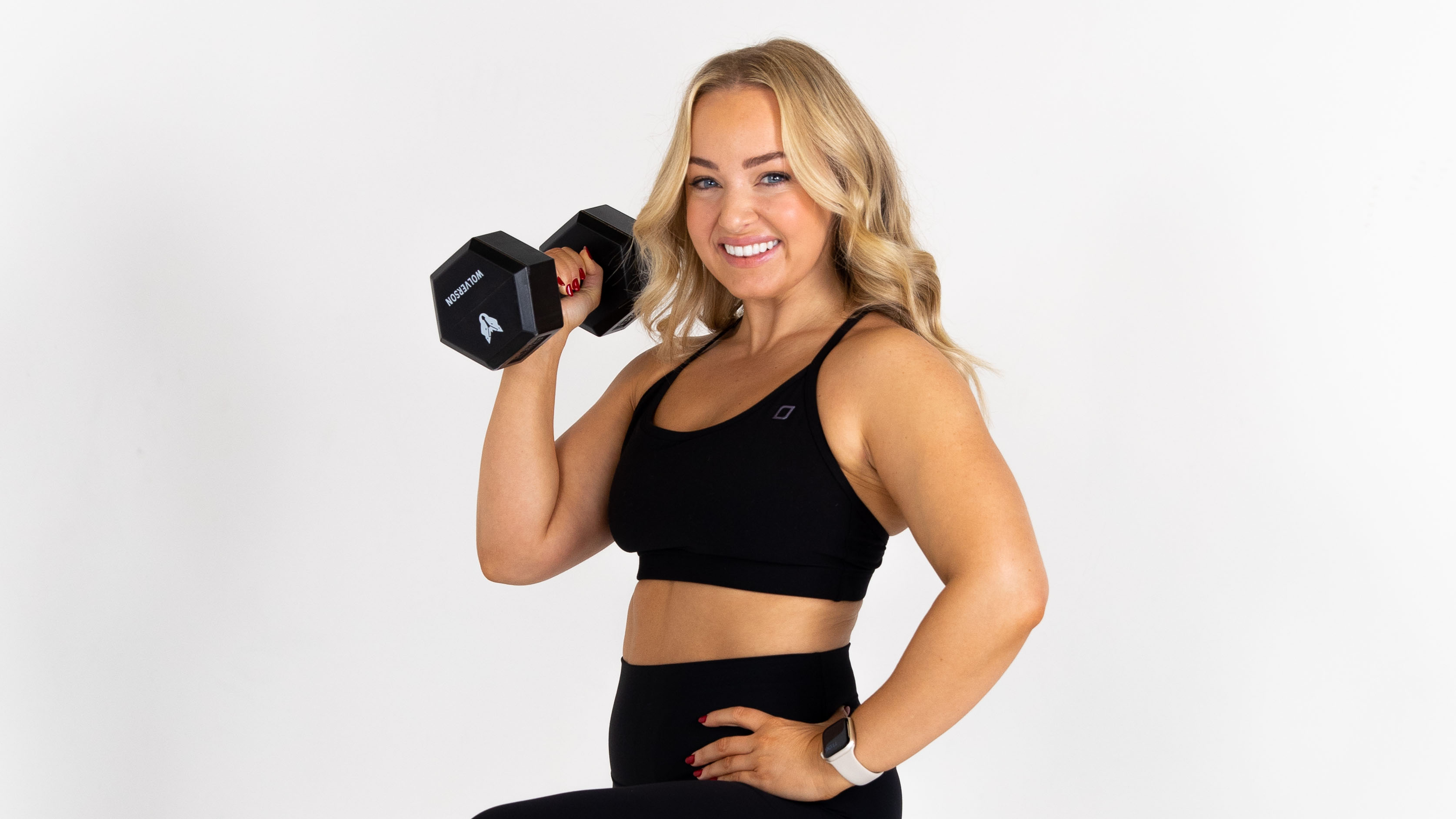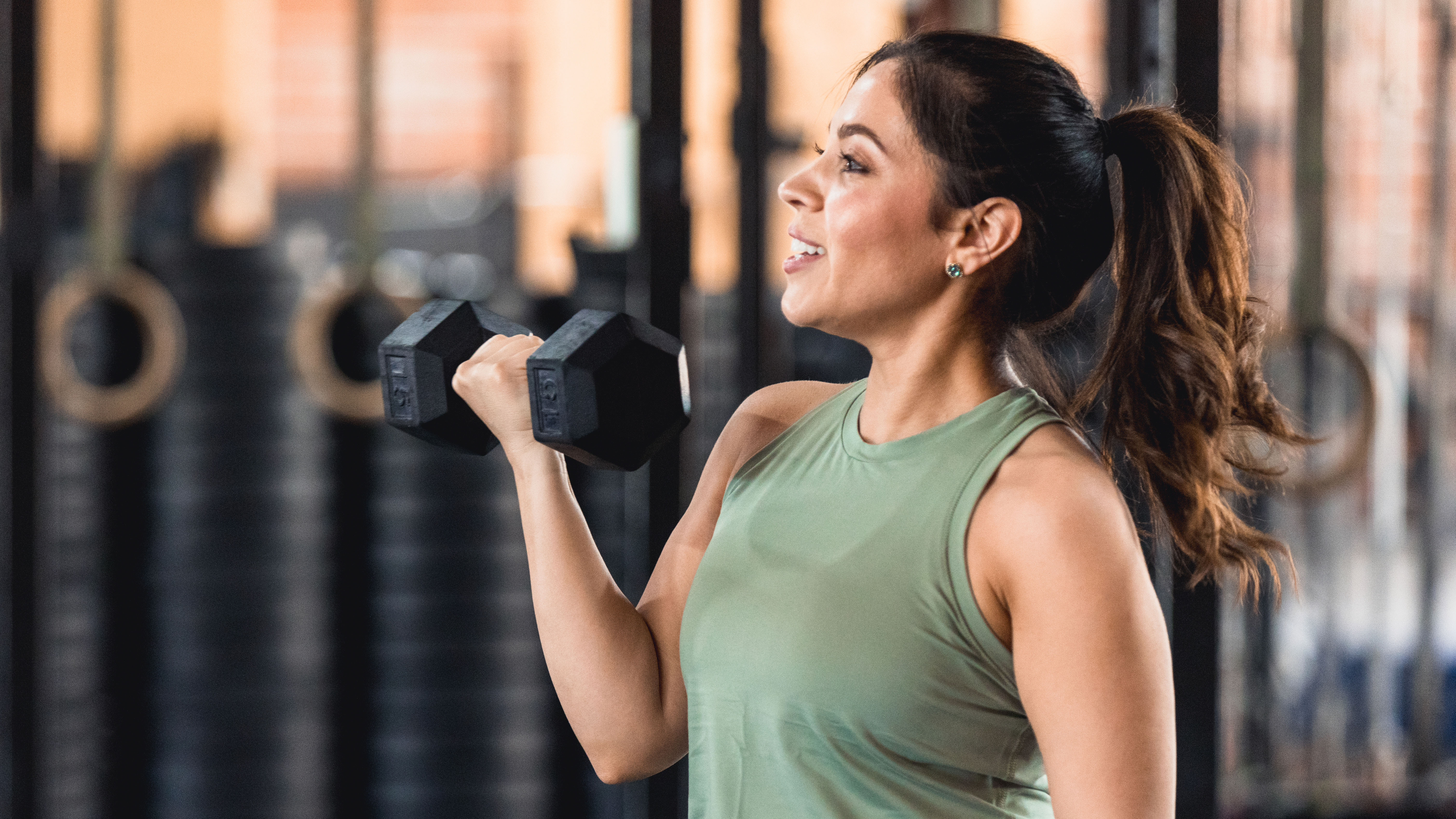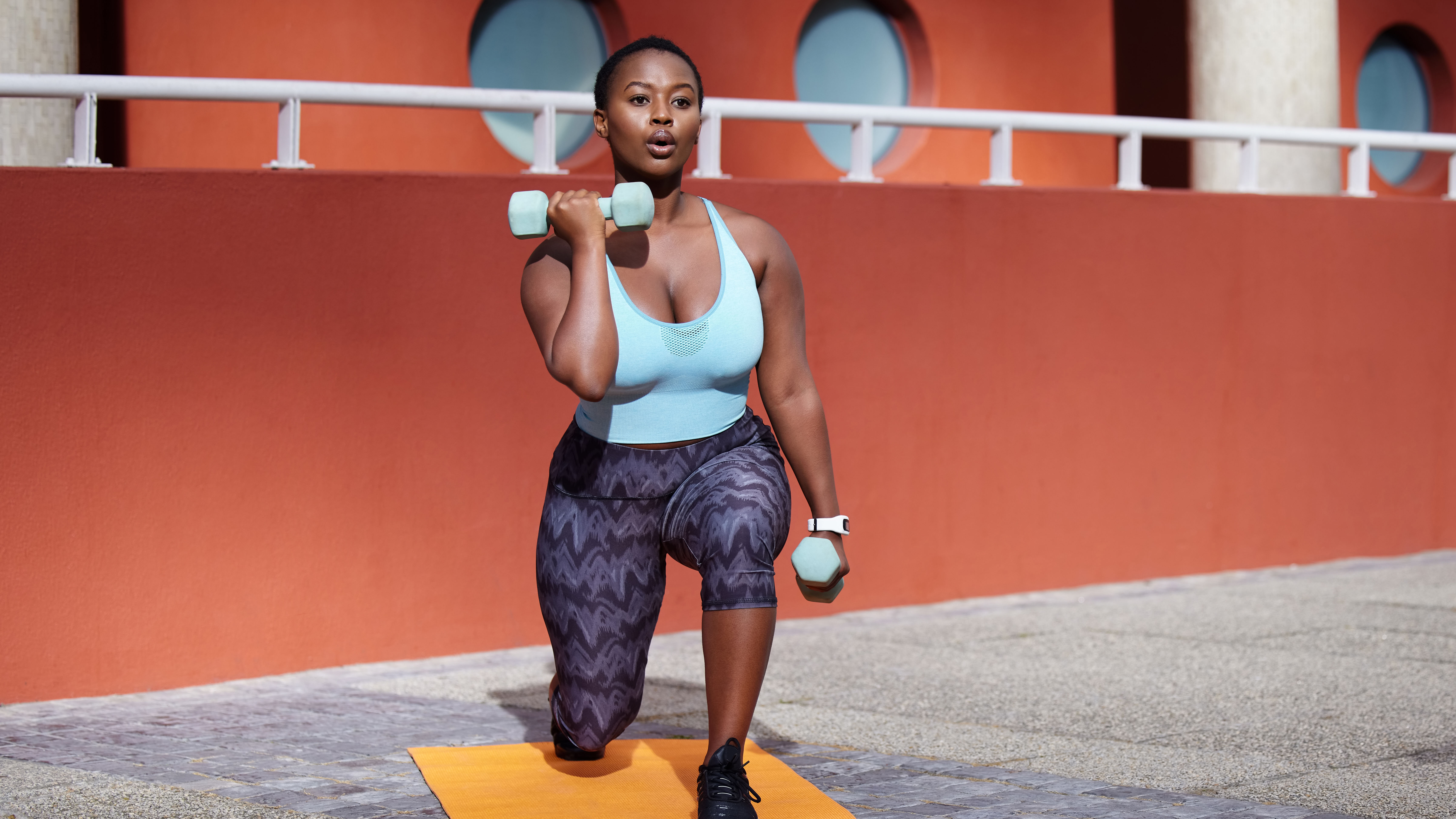Beginner strength training tips from Alice Liveing
Alice Liveing offers advice on reps, sets and moves for beginner strength training


When you’re a complete beginner, strength training can seem a little daunting – but it’s well worth incorporating into your exercise routine.
Regular strength training builds muscle, makes you stronger, and improves your body composition (your ratio of body fat to muscle). It boasts physiological benefits including lowering your cholesterol levels and improving heart health, plus it builds bone density and improves your posture. It's more accessible than you think too; you don’t need to hit the gym to start strength training, as you can pick up a pair of the best adjustable dumbbells and use them at home.
“Strength training is great for building a solid foundation,” explains Alice Liveing, a qualified personal trainer and fitness influencer. “All the everyday stuff you want to do with your body, like running, jumping, stretching, and generally moving about, requires a solid foundation. Strength training builds up your musculoskeletal system which includes bones, muscles, tendons, ligaments and soft tissue and makes everyday tasks easier.”
Here are Alice Liveing’s beginner strength training tips, for anyone who is just getting started.
Don’t be confused by the different terminology
Strength training is the umbrella term for weight training and resistance training. Both mean you are adding an opposing force against your muscles to make them work harder. This force can come in the way of things like bodyweight, dumbbells, kettlebells, barbells, cable machines, and the best resistance bands. “Most beginners tend to start with the resistance of their own body and then once you get accustomed to using your body weight and your confidence in the exercise increases, you might look to add things like dumbbells,” explains Liveing.
If you're looking for some strength training inspiration, why not get started by giving this chest and back workout a try?

The different types of weights
It can be a bit overwhelming when presented with all the different weight options (dumbbells, kettlebells, barbells etc.) but Liveing advises bodyweight exercises for complete beginners, with dumbbells as a progression. “They’re easy to set up and it’s easy to maneuver your body around them,” she says. "With something like a barbell you’re in a much more fixed position so your body requires a lot more proprioception [or movement awareness] to understand where you are in the exercise."
Start your week with achievable workout ideas, health tips and wellbeing advice in your inbox.
If you're ready to add some extra resistance to your strength training, we've rounded up a list of the best dumbbells on sale to help make sure you get a great deal.
Reps and sets
There are lots of different types of strength training. Arguably, the four most basic types are: power (engages fast-twitch muscle fibers for things like sprinting), strength (lifting heavy), hypertrophy (increases the amount of lean muscle) and endurance (engages slow-twitch muscle fibers for a prolonged period of time).
Each type requires a different exercise approach, with different weights, reps and sets. For the uninitiated, reps refer to repetitions (the number of times you repeat a move) and sets refer to those groups of repetitions.
“I would always advise a beginner to start with hypertrophy, which is a rep range of 8-12 reps for 3-5 sets,” says Liveing. “Hypertrophy is essentially increasing lean muscle mass and if you match this type of training with a calorie deficit, you’ll see fat loss with an improvement in body composition which is the ‘toned’ look most people want to achieve. Once you have mastered this, you can move on to endurance training and this would involve 12-15 reps.”
Picking the right weight
Picking the right weight for your workout is akin to Goldilocks choosing her porridge. The weight can’t be too heavy, or too light; it must be just right to hit that sweet spot. “Think of this as a fitness experiment,” says Liveing. “Start light and build yourself up. You should struggle to complete the last two-three reps in your set, but you must keep the correct form right until the end. A weight that is too heavy might do more harm than good. A weight that is too light won’t challenge the muscle. There’s no way I could be prescriptive about what weight to use because what’s heavy to me might be light or heavy to someone else.”

Progressive overload
When your weights start to feel easy, you need to challenge the muscles again. That's where the principle of progressive overload comes in.
“Progressive overload is slowly increasing the stimulus on the body when it feels ready. For example, if you use a 5kg dumbbell in your goblet squat for three weeks and you start to feel this has become easy, increase it to a 6kg dumbbell. Then after another three weeks, move up to 8kg. Remember to go up slowly and in gradual increments.”
If you want to learn more about this principle (and it's strength-boosting benefits) then we recommend reading our comprehensive guide: "Progressive overload explained".
Compound movements are best for beginners
Compound exercises work multiple muscle groups at the same time, whereas an isolation exercise works one specific muscle group, like a bicep curl. “Compound moves are better for beginners as they tend to use both legs, or both arms,’ adds Liveing. “Some examples would be squat, chest press, bent over row or overhead press.”
Added benefits for women
One of the biggest concerns for women when it comes to strength training is the worry that they will ‘bulk-up,’ but this couldn’t be further from the truth. “Women can’t bulk in the way they fear because they actually don’t produce enough testosterone to elicit that level of change,” says Liveing. ‘You also need to be lifting really heavy weights for a prolonged period to see that level of change in body composition. However, it’s actually one of the best things women can do for their bone health. A women’s bone density starts to decrease when she hits menopause and osteoporosis is much more common in women than men. Numerous studies have shown that strength training can play a role in slowing bone loss and even build bone mass.”
Ready to get started? Try our kettlebell workout for beginners.
Vicki-Marie Cossar is a UK-based freelance journalist who has more than 20 years experience writing across the topics of health, fitness, fashion, beauty and wellbeing. She was formerly responsible for the Life & Style section of Metro’s features department (now called Trends) and currently writes Metro’s weekly Wellbeing supplement.
